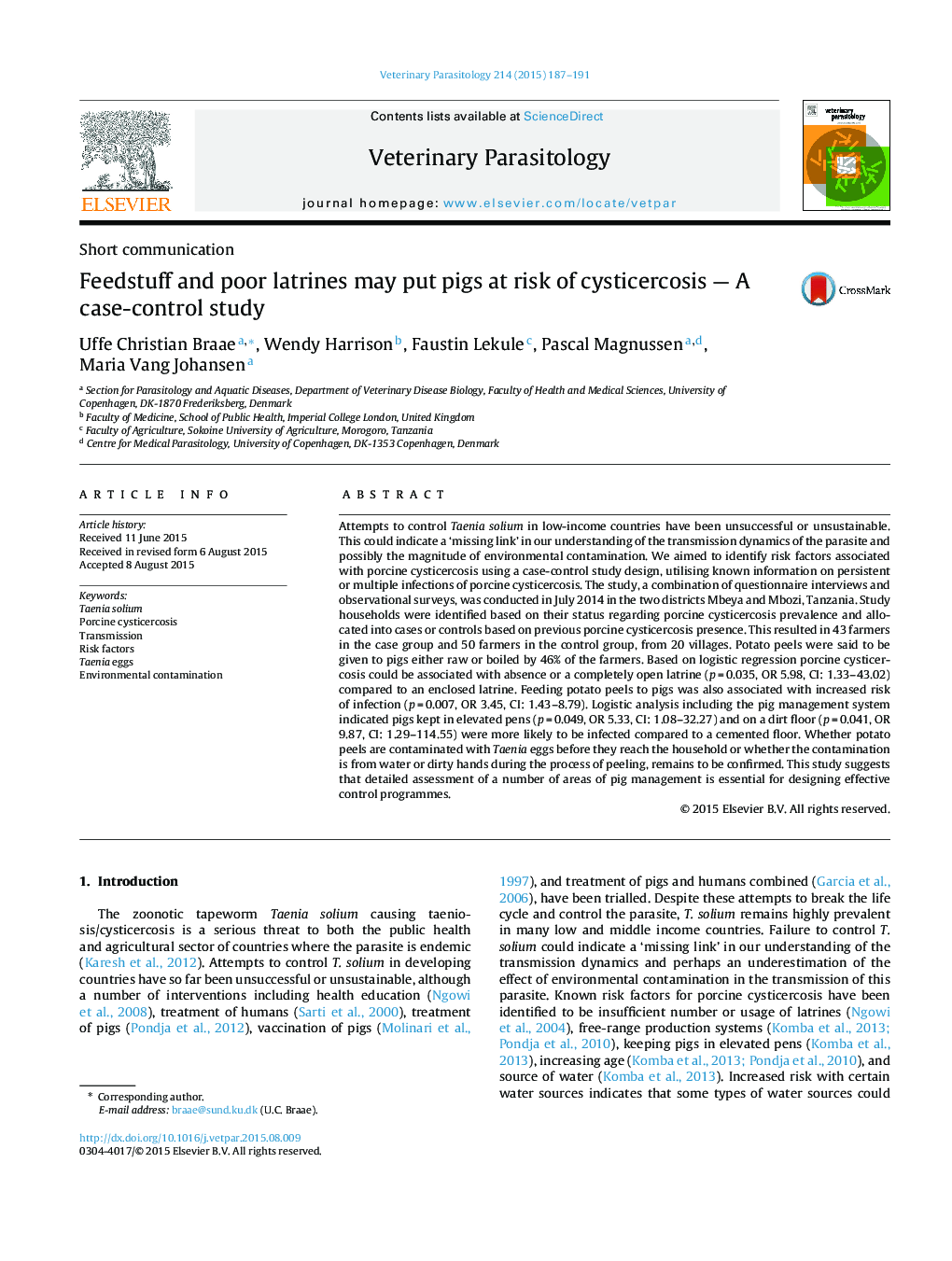| کد مقاله | کد نشریه | سال انتشار | مقاله انگلیسی | نسخه تمام متن |
|---|---|---|---|---|
| 5802276 | 1555663 | 2015 | 5 صفحه PDF | دانلود رایگان |
• Identify risk factors associated with porcine cysticercosis using a case-control study design, utilising known information on persistent or multiple infections of porcine cysticercosis.
• Porcine cysticercosis could be associated with absence or a completely open latrine.
• The results suggest contamination of the potato peels with Taenia eggs.
• This is the first study to associate a specific feedstuff item with increased risk of porcine cysticercosis.
• Blocking transmission to pigs will require detailed assessment of a number of areas of pig management.
Attempts to control Taenia solium in low-income countries have been unsuccessful or unsustainable. This could indicate a ‘missing link’ in our understanding of the transmission dynamics of the parasite and possibly the magnitude of environmental contamination. We aimed to identify risk factors associated with porcine cysticercosis using a case-control study design, utilising known information on persistent or multiple infections of porcine cysticercosis. The study, a combination of questionnaire interviews and observational surveys, was conducted in July 2014 in the two districts Mbeya and Mbozi, Tanzania. Study households were identified based on their status regarding porcine cysticercosis prevalence and allocated into cases or controls based on previous porcine cysticercosis presence. This resulted in 43 farmers in the case group and 50 farmers in the control group, from 20 villages. Potato peels were said to be given to pigs either raw or boiled by 46% of the farmers. Based on logistic regression porcine cysticercosis could be associated with absence or a completely open latrine (p = 0.035, OR 5.98, CI: 1.33–43.02) compared to an enclosed latrine. Feeding potato peels to pigs was also associated with increased risk of infection (p = 0.007, OR 3.45, CI: 1.43–8.79). Logistic analysis including the pig management system indicated pigs kept in elevated pens (p = 0.049, OR 5.33, CI: 1.08–32.27) and on a dirt floor (p = 0.041, OR 9.87, CI: 1.29–114.55) were more likely to be infected compared to a cemented floor. Whether potato peels are contaminated with Taenia eggs before they reach the household or whether the contamination is from water or dirty hands during the process of peeling, remains to be confirmed. This study suggests that detailed assessment of a number of areas of pig management is essential for designing effective control programmes.
Figure optionsDownload as PowerPoint slide
Journal: Veterinary Parasitology - Volume 214, Issues 1–2, 30 November 2015, Pages 187–191
